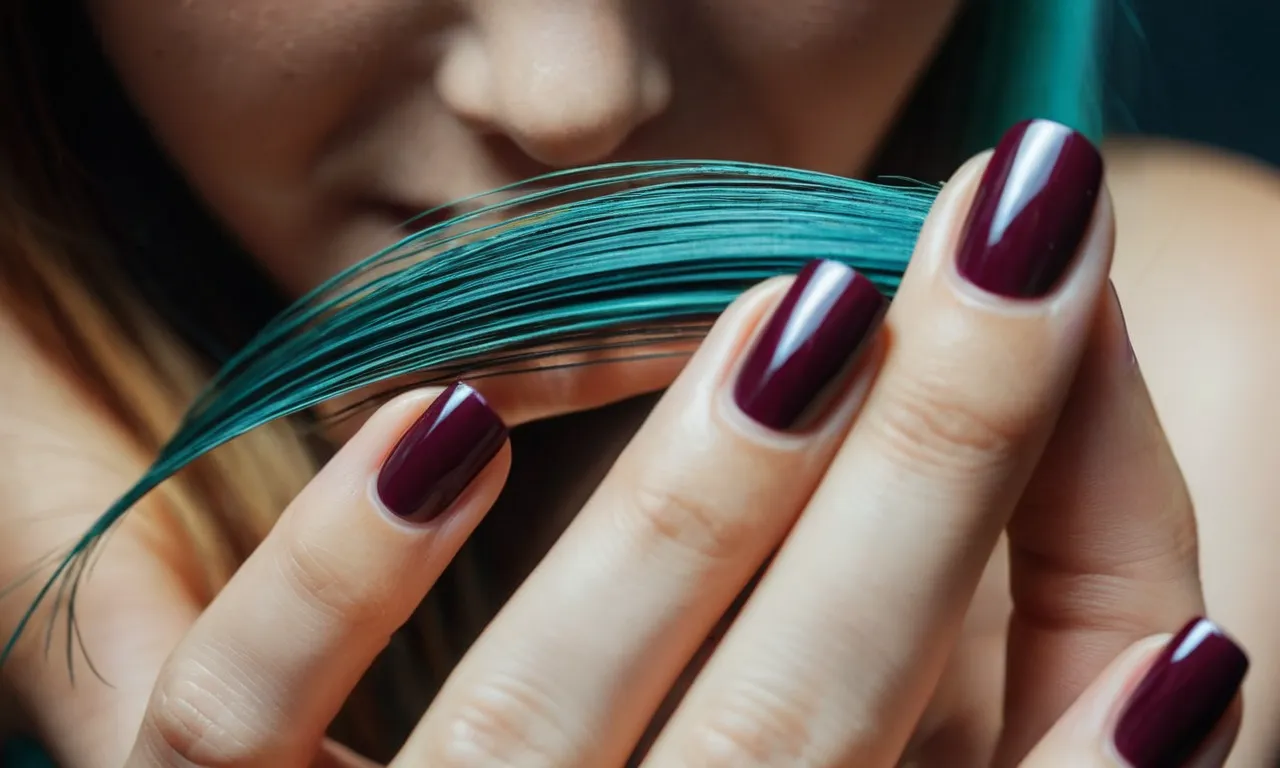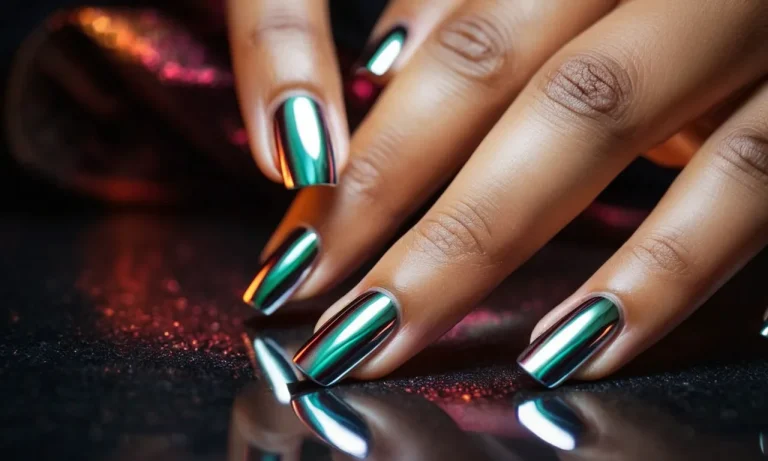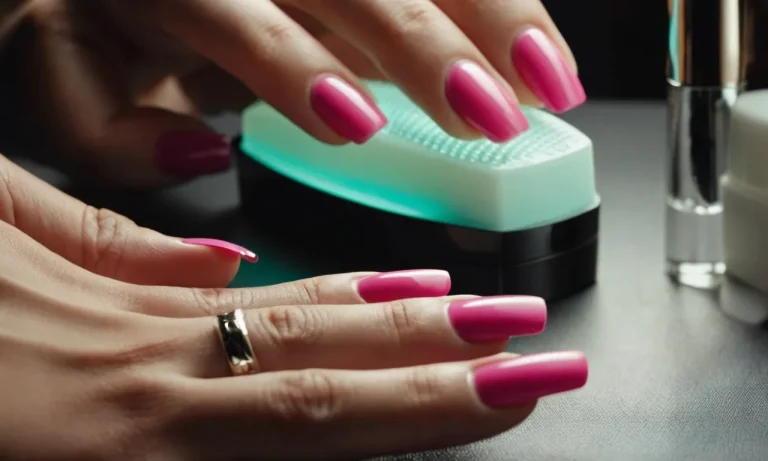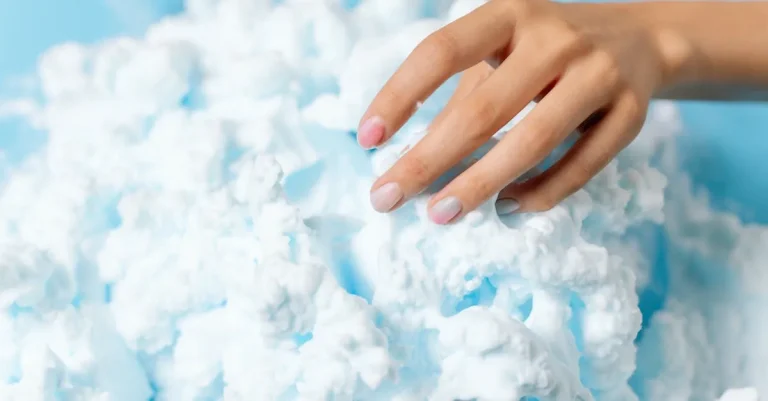Are Hair And Nails Living Or Nonliving Tissue?
Nails and hair are made from keratin and have no active cells, but are they truly lifeless? Let’s investigate what gives life to our tresses and tips.
If you’re short on time, here’s a quick answer to your question: While hair and nails are made of dead cells and proteins, the tissues that produce them in our skin and cuticles are very much alive. So in that sense, they occupy an intriguing middle ground between living and nonliving.
In this comprehensive guide, we’ll look closely at the biology of hair and nails, how they grow, what sustains them, and how that toes the line between living and nonliving. We’ll also overview health conditions that can disrupt their lifecycles and explore just why they can keep growing after death.
The Basic Biology of Hair and Nails
What Are Hair and Nails Made Of?
Hair and nails are made of a tough protein called keratin. Keratin is also found in skin and is a major structural material that makes up feathers, horns, claws, and scales in animals. The hair and nails consist of many keratin fibers bundled together.
The specific amino acids in keratin make it insoluble in water and very resistant to damage from heat and chemicals.
Hair is composed mainly of dead keratinized cells. The hair shaft contains three layers: the medulla, cortex, and cuticle. The innermost medulla may not be present in fine hairs. The cortex makes up the bulk of the hair shaft.
It contains bundles of keratin which are held together by keratin-associated proteins. The outermost cuticle protects the inner layers and consists of overlapping cells like shingles on a roof. This cuticle pattern contributes to the texture and manageability of hair.
Nails are also made of keratin fibers densely packed together. The parts of a nail include the nail bed, nail matrix, cuticle, nail plate, and nail folds. The nail bed contains blood vessels, nerves, and melanocytes that produce pigment.
The nail matrix at the base is where new keratinized cells form and push older cells outward as the nail grows. The lunula is the whitish crescent-shaped base of the visible nail.
Where Do They Originate in the Body?
Hair originates in hair follicles deep in the dermis layer of the skin. Hair follicles are formed during fetal development and cycle through periods of growth (anagen), regression (catagen), and rest (telogen) throughout life.
The dermal papilla at the base of the follicle contains blood vessels that provide nutrients for hair growth. The hair shaft grows outward from multiplying matrix cells near the papilla.
Fingernails and toenails originate from the nail matrix, which is the nail growth center housed under the cuticle and overlies the nail bed. The nail matrix produces nail cells that become tightly compacted, hardening as they push forward to form the nail plate.
Nails grow at an average rate of 3 mm per month, but can be affected by age, nutrient intake, and diseases like anemia.
The Growth Cycles of Hair and Nails
The Phases of Hair Growth
Hair goes through three distinct phases during its growth cycle (American Academy of Dermatology). The anagen phase is the active growth phase which can last 2-7 years. During this time, cells in the hair follicles divide rapidly to produce a hair shaft which continues to grow around 1 centimeter per month.
The catagen phase signals the end of the active growth phase, lasting only 2-3 weeks as the hair follicle shrinks. Finally, the telogen phase is a resting period, lasting around 3 months before the hair falls out and a new one begins growing.
On average, a healthy scalp contains 80-90% hair follicles in the growing anagen phase while only 10-20% are in the shedding telogen phase (NIH). However, various factors like hormones, medications, stress, and dietary deficiencies can disrupt the hair growth cycle leading to excess shedding, thinning hair or impaired regrowth.
Maintaining a balanced diet, reducing stress, and treating underlying medical conditions can help minimize hair loss.
Nail Growth Process and Rate
Fingernails and toenails grow through a complex process where cells in the nail matrix called keratinocytes produce the nail plate, nail bed and hyponychium (NIH). The nail matrix lies under the cuticle and contains blood vessels, nerves and melanocytes responsible for nail color.
As new nail cells form in the matrix, older nail cells get compacted and pushed forward toward the fingertip at an average rate of 3-4 millimeters per month for fingernails and 1 millimeter per month for toenails.
However, nail growth rate can vary significantly between people and even between nails on the same person. Factors like nutrition, age, genetics, season, fingernail vs toenail, injury, and nail diseases affect the rate (Research). For example, nail growth may slow as we age due to reduced blood flow.
Still, keeping nails trimmed regularly is key for preventing painful ingrown nails and allowing easy function of fingers and toes.
Are the Tissues That Produce Hair and Nails Alive?
The tissues that produce hair and nails are very much alive! Although hair and nails may seem “dead” as they are composed of keratin proteins, the parts of the body that generate these structures are living tissues.
The Hair Follicle and Root
Hair begins its life cycle in a follicle deep under the skin. The base of the hair follicle contains the hair bulb and root, which house actively dividing cells that produce new hair cells. The hair bulb receives nutrients from tiny blood vessels to fuel this growth.
So while the hair shaft itself is nonliving, the follicle and root that create it are very much biologically alive.
The Nail Matrix
Similarly, nails originate in the nail matrix, the area under the cuticle and lunula (whitish moon shape on the nail) at the base of the nail bed. The nail matrix contains living keratin-producing cells that divide rapidly as new layers of hard keratin are formed.
A rich supply of blood vessels provides the nutrients needed for nail growth. Although nails are composed of “dead” keratinized cells, their source in the nail matrix is a living, growing tissue.
Continuous Regeneration
Both the hair follicle and nail matrix undergo cell division continuously to regenerate hair and nails. The average rate of growth is about 1 centimeter per month for nails and up to 1.25 centimeters per month for scalp hair.
This ongoing cell proliferation indicates these tissues are metabolically active and alive.
In contrast, true “dead” tissues like hair and nail shafts have no metabolic functions once they have fully keratinized and detached from the body. Only the living parts embedded under the skin – the follicle and matrix – can spark new hair and nail growth.
Disorders That Disrupt Hair and Nail Lifecycles
Alopecia or Baldness
Alopecia or baldness is a disorder in which people experience hair loss from some or all areas of the body. The most common type is androgenetic alopecia, also known as male or female pattern baldness, which accounts for about 95% of all hair loss.
This condition is caused by genetics, aging and changes in hormone levels. It often begins with gradual thinning at the temples or crown and can progress to complete baldness over time. Other types of alopecia are alopecia areata, which causes patchy hair loss, and alopecia totalis, which is complete baldness on the scalp.
It’s estimated that about 80 million men and women in the United States have some degree of alopecia or baldness. While there’s no cure, treatments aim to slow or stop hair loss and stimulate regrowth.
Options include over-the-counter minoxidil, prescription finasteride pills, laser devices such as the FDA-approved HairMax LaserBand 82, platelet rich plasma injections and hair transplants for more significant cases. Wearing wigs and hairpieces can also help manage appearance.
With alopecia, it’s key to start treatment early to have the best chance of keeping the hair you still have.
Fungal Nail Infections
Fungal nail infections, also called onychomycosis, are a common condition affecting about 10% of adults in the U.S. They happen when fungi overgrow on the nail bed under the nail plate. The toenails are more vulnerable as they are often confined in shoes, keeping them dark and moist, which fungi thrive on.
Early signs are white or yellow spots on the tips of nails. Without treatment, the infection worsens, causing nails to thicken, crumble and change color. In severe cases, the nail may separate from the nail bed entirely.
The main risk factors are older age, diabetes, a weakened immune system, and injuries to the nail that allow fungi entry. Besides an unsightly appearance, complications include pain, difficulty walking if the toenails are impacted, and spreading infection to the skin.
Fungal nail infections can persist for years without treatment. Prescription oral medications, topical solutions, laser therapy and removal of the infected part of the nail are treatment options. Taking preventive steps such as keeping nails trimmed, avoiding trauma to nails and wearing clean, dry socks and shoes can also help reduce risk of fungal nail infections.
The Question of Post-Mortem Growth
An interesting question regarding hair and nails is whether they can continue growing after someone has died. While a common myth persists that hair and nails grow post-mortem, scientific evidence does not support this claim.
The Origin of the Myth
The myth likely arises from the appearance of longer hair and nails on corpses. As the body begins decomposing after death, the skin recedes, making hair and nails seem longer. However, actual new growth does not occur.
Hair and nail cells require a living body to metabolize nutrients and stimulate cell division in order to grow. Once someone dies, these processes halt.
Scientific Research
Multiple scientific studies have investigated post-mortem hair and nail growth. In one study published in the Journal of Forensic Sciences, the length of beard hair from 11 corpses was measured at various intervals after death. No significant lengthening was found over time, debunking the myth.
Additionally, a study in the Journal of the European Academy of Dermatology and Venereology took microscopic images of hair roots on two cadavers within 96 hours after death. They did not observe any evidence of new cellular growth occurring.
Practical Implications
The lack of post-mortem hair and nail growth has important implications in forensics. Time of death estimates depend on accurate knowledge of how corpses change after death. Understanding that these tissues do not have cell metabolism or divide after death helps medical examiners make more precise conclusions.
So while the idea of bodies sustaining processes like hair and nail growth after life ends may seem spooky, scientifically we know that decomposition changes give this appearance. Hair and nails do not literally continue growing, but remain a fixed length after death occurs.
Conclusion
While hair and nails themselves are nonliving, the tissues that generate them are very much alive. The living dermal papilla and nail matrix cells have to divide and support their growth through intricate lifecycles.
So in the end, how we answer whether hair or nails are living or not owes to semantics around what we consider “alive.” And their persistent post-mortem thriving only adds complexity. But looking closely at their biology does reveal deeper insight around what gives them such tenacity in life and beyond.







